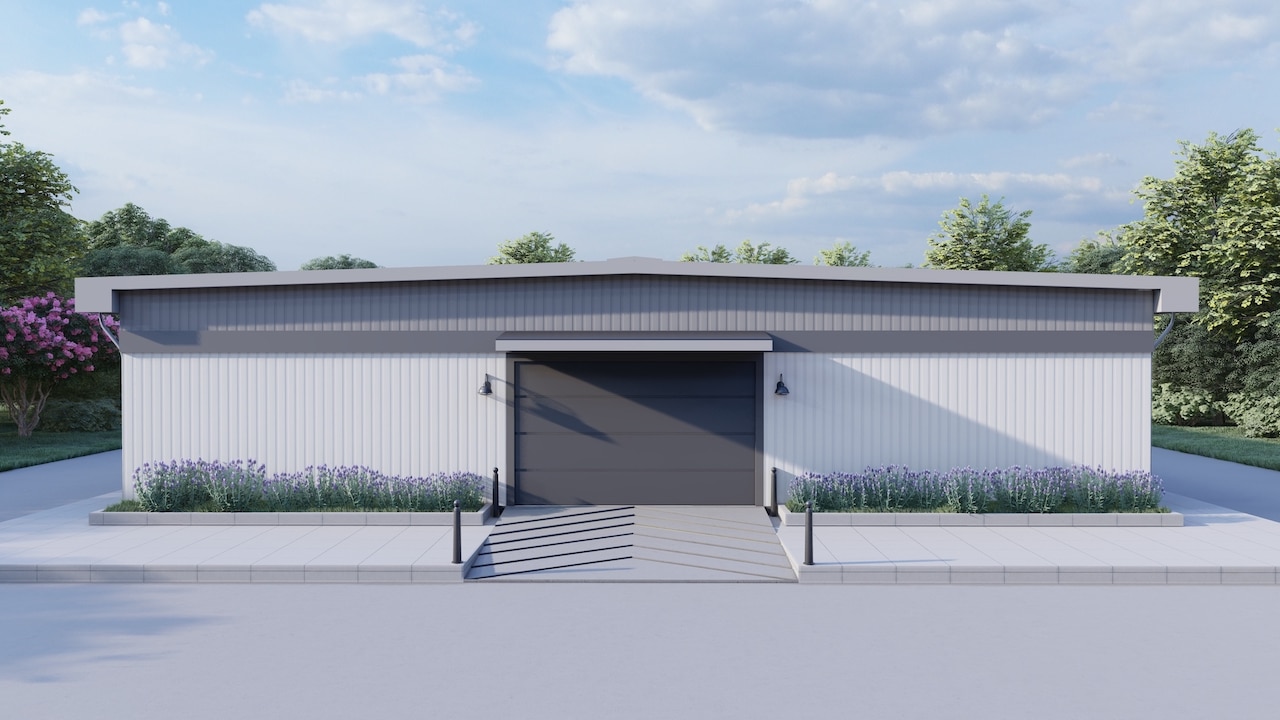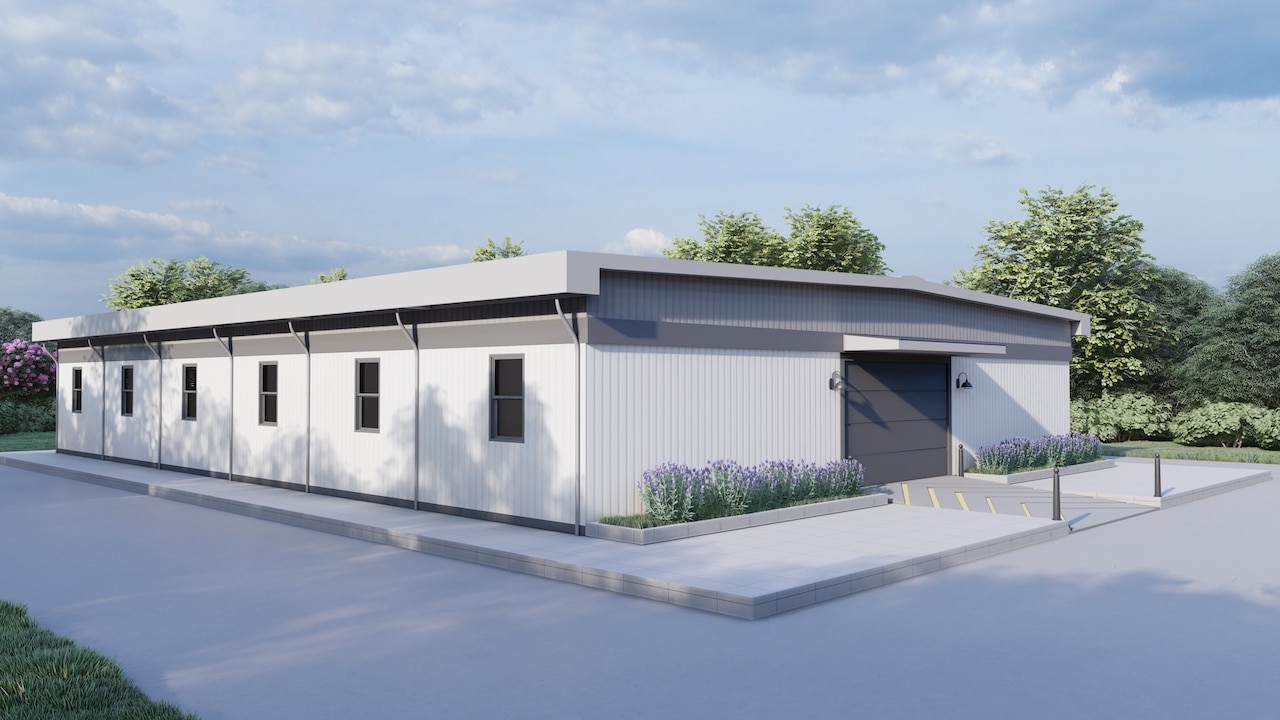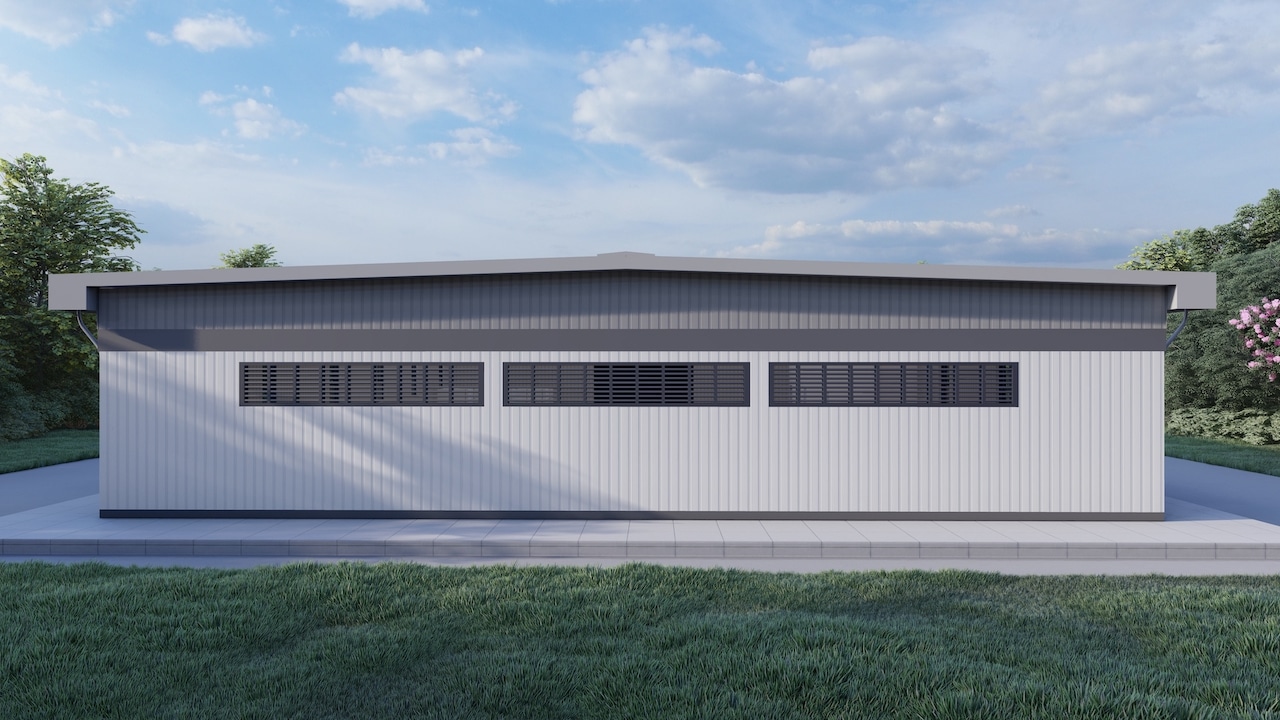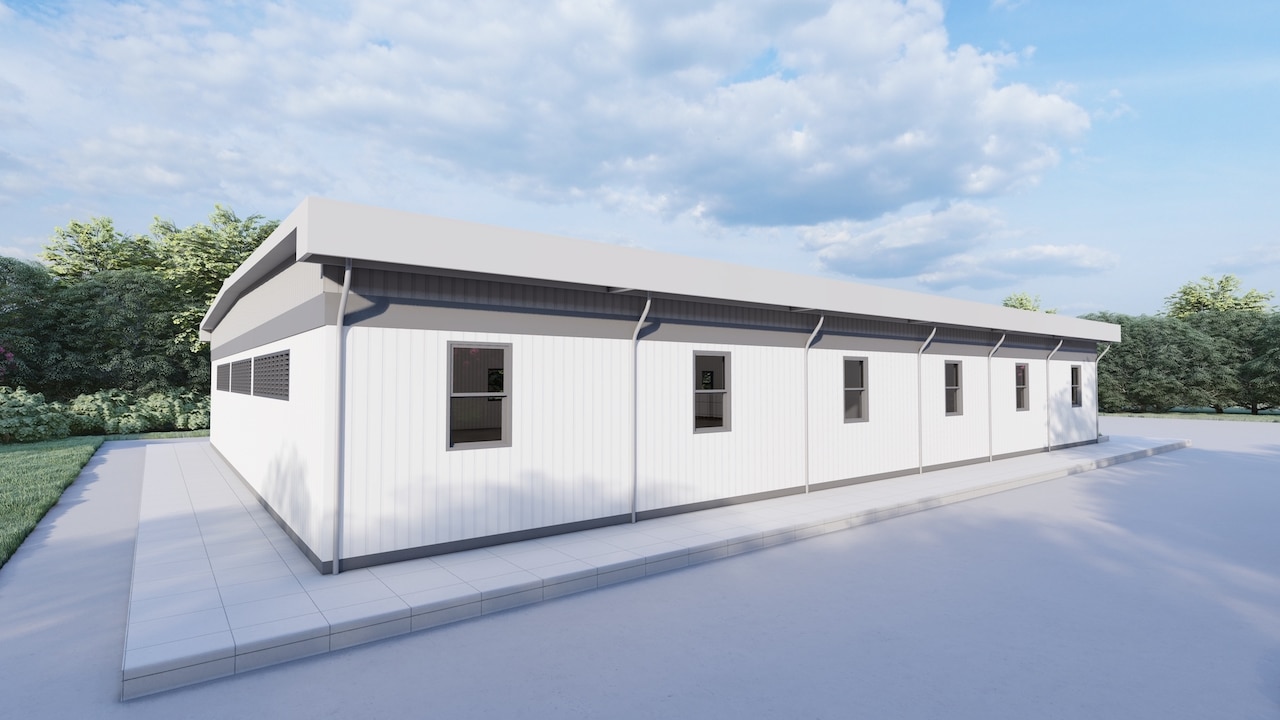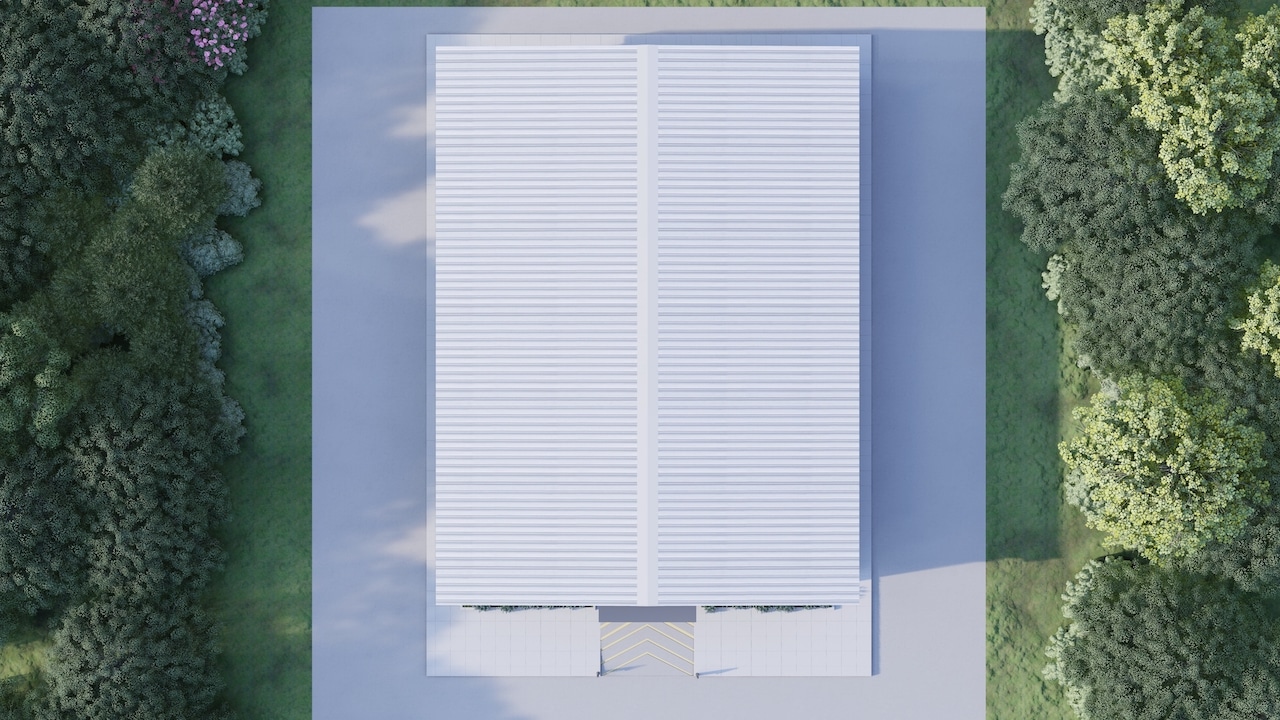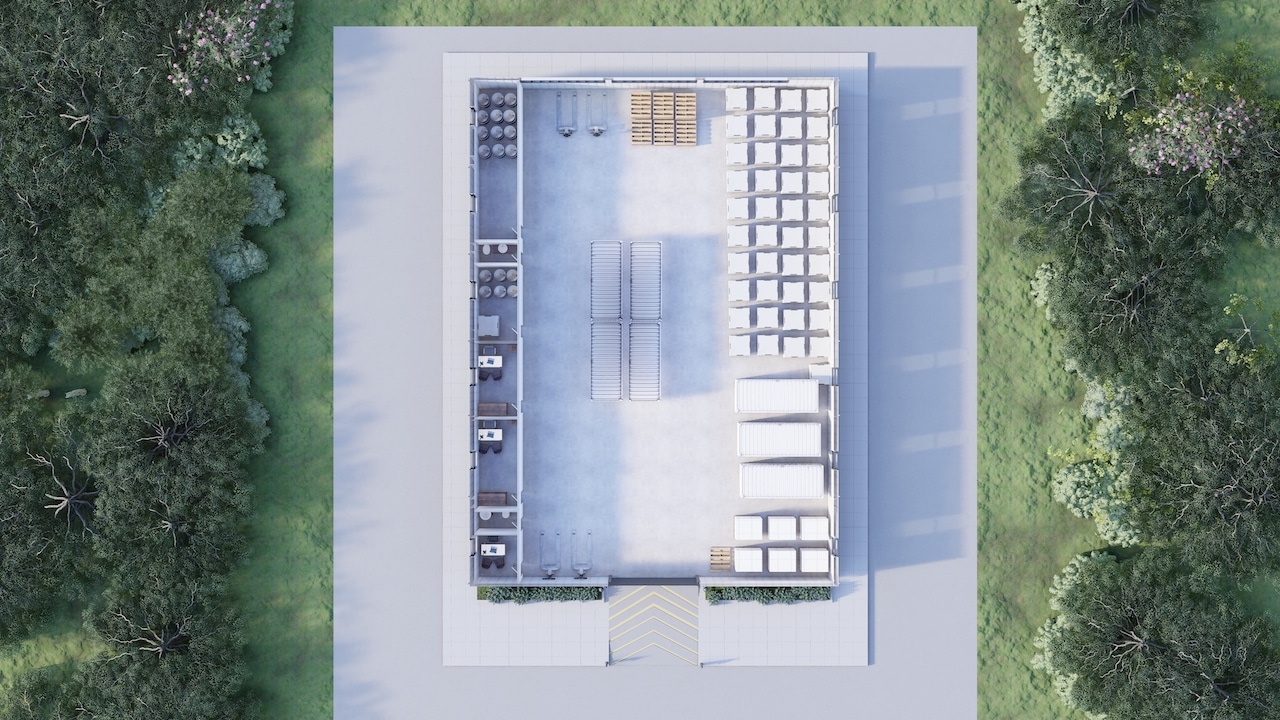Are you looking to build your first warehouse or another one? Before you go for a traditional build, consider modular warehouse buildings.
A modular design can help you get the warehouse of your dreams. Additionally, you won’t need to spend as much money or time building it and getting it ready to use.
What's In This Article
What Is a Modular Warehouse Building?
A modular warehouse building is quick and easy to install. However, they have an excellent structure that makes them durable and usable long-term. In modular construction, a company produces the parts of a building and then brings them to the building site.
Once the parts are ready, they will go to the building site for assembly. Modular warehouse buildings use the same materials as traditional buildings. They also have to meet the same standards for construction.
Like traditional buildings, modular buildings come in a variety of sizes. That way, you can make sure the building will fit where you need it and that it will be big enough for what you need. And the buildings come in various materials, so you can consider that when choosing the right option for you.
Common Names You Might Hear These Buildings Referred to As:
You might hear people refer to modular warehouse buildings in other terms, like:
- Prefabricated
- Manufactured
These terms mean very similar things, leading to many people using them interchangeably. For the purposes of clarity, modular is the primary term used in this article.
Types of Modular Warehouses
When looking for a modular warehouse, you should consider the different types available. The right kind of modular warehouse will depend on your situation and needs.
Consider the following types of modular warehouses. Then, you can decide which type is the best for you.
Temporary
Temporary modular warehouse buildings are great if you need storage for a short period. Maybe you’re in the process of moving your business and need a place to put your inventory. Or perhaps you want to shop around for your own permanent warehouse.
A temporary modular building can be a great option until you can move to a more permanent location. They usually use a wood frame and have a concrete foundation. You can choose the right size and floor plan to make the building fit your needs.
If you don’t want to commit to using a modular warehouse long-term, you can give it a try with a temporary building. Be sure to consider your options within this category so that you can have the best chance of enjoying your experience.
Lease and Co-Op Options
One excellent way to afford a temporary modular warehouse is to lease it. You’ll make monthly payments until you either stop using the building. Plus, you don’t have to worry about ordering a new modular building.
Instead, you can test it out for a while to see how you like it. Be sure to consider if you’ll use the building for office or storage space. You’ll also need to consider where the building is and the overall size. That way, you can lease a good modular warehouse.
Another way to get a temporary modular warehouse is to go through a co-op. This is an excellent choice for schools and non-profit organizations that need a warehouse. You can research co-op groups in your area to find one that will help you obtain the building.
Co-ops help organizations save money on the modular warehouse. So if you need extra storage space for supplies or another office, a co-op may be perfect for you. Then, you don’t have to worry about finding the money to buy a modular building alone.
Estimated Length of the Warehouse’s Life
You can expect a temporary modular warehouse to last about 25 to 30 years. New buildings will almost always last longer than used buildings. Either way, the objective of a temporary modular warehouse is to meet building codes and to get up and running fast.
Because of that, you may need to compromise on a super long lifespan. Still, 25 to 30 years can be the perfect amount of time for some companies.
What’s more, the building may last longer if you take good care of it. You may be able to extend its lifespan by a couple of decades with updates, just like with a regular building. Be sure to update things such as:
- Flooring
- Roofing
- Siding
Then, you’ll have an excellent structure that you can use for years to come without having to rush to replace the temporary warehouse.
Permanent
Permanent modular warehouse buildings are quite similar to traditional buildings. These buildings still follow modular construction since companies build the sections offsite. However, they use a more permanent foundation than temporary modular buildings.
It does involve more onsite construction than temporary construction. Once the parts arrive at the building site, they will go on a concrete foundation or a pier and beam.
Because of their design and construction, permanent modular buildings last longer. They can be great for people who want to use them over the long term. So if you know you want to build a warehouse but don’t want to spend as much money on construction, this is a great option.
Plus, you can also enjoy the same time-saving benefits as with temporary modular warehouse buildings. But you don’t have to worry about not having the structure last as long as you may need it to.
Finance Options
When purchasing a permanent modular building, you can incur a lot of costs. You can go through the modular building company. Some companies will offer a finance lease with a buyout, so you can lease the building and put your payments toward a final purchase.
The term can last anywhere from one to three years. You may only need to spend a few thousand dollars on the modular building at the end of the term to gain ownership of it.
In some cases, you may also be able to go through your bank. You can get a construction loan to pay for building the modular warehouse.
Once the construction finishes, it can switch to being a real estate loan. Then, you’ll be able to pay off the loan and own the building.
Estimated Length of the Warehouse’s Life
Because they’re permanent, they will last longer than temporary modular buildings. These buildings often last more than 35 or 50 years.
If you take good care of the building, it may even last longer than a century, which can be great if you plan for your building and business to continue thriving into the far future.
A permanent building will last longer with a good initial building process. The building should be on a solid foundation that won’t crack as easily.
Permanent modular warehouse buildings also use more robust materials. That way, they can withstand various weather patterns and storms.
Like with temporary buildings, you can extend the lifespan of a permanent structure. As long as you care for the building and make necessary updates, you may not need to worry about buying a new modular building.
Why Modular Warehouse Buildings?
When deciding what type of warehouse building to get, you should consider the advantages of modular structures. While they may not be as common as traditional buildings, they could be the right choice for you.
Consider the following factors to decide if you should invest in a modular warehouse building.
Speed
Constructing a modular building doesn’t take as much time as constructing a traditional warehouse. As some people from the company build the walls and the rest of the structure, others can work on preparing the building site.
You can also design the walls and the roof at the same time. Additionally, you don’t have to worry about bad weather affecting the timeline of the project. Companies can build your warehouse inside, allowing work to continue regardless of external factors.
That allows you and the build team to work more efficiently. So if you want to get a building up in less time, a modular structure is the best choice.
Environmentally-Friendly
You can also help save the environment by using a modular building. Since the company doesn’t have to work as much on the site, that can help lower the pollution that comes from your project.
And since much of the work happens in a controlled environment, the construction company can keep an eye on the waste. Then, the company can properly dispose of that waste and help maintain the environment around the site of your warehouse.
If you had a company build from scratch at the site, that would use more energy. The company would have to transport equipment and produce more carbon dioxide. And controlling waste wouldn’t be as easy.
High-Quality Standards
Like traditional buildings, modular buildings have to follow city codes. That means a good modular construction company will have the same standards as any other company. You can make sure the company is careful to set up your warehouse.
Then, you’ll be able to use the building safely, and you shouldn’t have to worry about it caving in and hurting people inside. Instead, you can focus your attention on other parts of your business to make sure you can grow and remain successful.
Any reputable company will follow standards with any building they construct. But getting a modular warehouse can give you a better chance of getting the best quality result.
Flexibility
Modular buildings are also super flexible. You can order a building that will meet your specific needs. That means you’ll be able to design a warehouse to use for storage, production, or as an office space.
And if you ever decide to move your warehouse, you can do that. A lot of modular buildings are easy to disassemble and reassemble in a new location. Of course, you’ll need to build a new foundation, but that can save a lot of time and money.
Cost Savings
Speaking of money, modular buildings can cost less to construct than traditional buildings. A lot of this goes back to the fact that modular warehouses don’t take as long to build. You don’t have to pay as much to individuals to help design the building either.
When you design a traditional building, you need to pay for the following:
- Architects
- Design team
- Engineers
- Project manager
However, you only need to pay for the construction company to build your modular structure. That can help you save a lot of money on the cost of construction.
More Favorable Depreciation
One of the benefits of constructing any type of building is that you can save on taxes. However, with a traditional building, you have to spread the savings out over as much as 35 years.
When you buy a modular building, the savings schedule is a lot shorter. You can choose a depreciation schedule as short as seven years. Even the 12-year schedule looks a lot better than the 35-year schedule that comes with traditional buildings.
So if you want to save on your business taxes, you may want to go with a modular building.
Pros and Cons
When looking at modular warehouse buildings, you should consider the pros and cons of going this route. Here are the most important things you should know.
Pros
- Simple
- Fewer delays
- Less noise transfer between rooms
- Safer construction process
- Better quality structure
Cons
- Transportation issues
- Size limitations (because of transportation
- Can be hard to get a permit
- Harder to sell
How Much Does a Modular Warehouse Cost?
On average, you can expect to spend about $55 or $60 per square foot on your new modular warehouse. But the exact price can vary based on a few things.
You should consider the construction companies near you and if they offer modular builds. Along with that, consider the experience and the size of the construction team.
The cost of living in the area may also influence the cost of the building. If you want to rush the project, you may need to pay a premium to get on the schedule. You should think about whether you want to build a temporary or permanent modular warehouse as well.
All of these things can affect how much you’ll pay to build a modular warehouse. But they aren’t the only things that matter. A couple of other factors to think about include:
Size
Of course, you need to think about how big your warehouse will be. The bigger it is, the more materials you’ll need and the longer it can take to build. If the project is to be completed quickly, it will take more people, increasing the cost of labor.
Transporting the modules for a bigger warehouse can also increase the price. The construction company might need to use a special truck. Regardless of the size, a longer distance may also affect how much the building will cost, so consider how far the company you hire is from your ideal build site.
Quality of Materials
You should also think about the quality of the materials that a construction company uses. Of course, you can save money by using cheaper materials. But while that may lower your costs now, it may cause the building not to last as long, or you may need to spend money on repairs.
Investing in good-quality materials will cost more upfront. But it can save you money and stress later because you’ll know your warehouse is as safe as possible. You may also search for materials that aren’t the best but aren’t super cheap. That can help you save money while getting suitable materials.
Modular Warehouses Options?
Before you pay for the first modular warehouse option, you should consider a few things. That way, you can ensure your warehouse will be the right size and have the interior you need.
Think about everything from the dimensions to the design to the foundation.
Typical Widths
While you may customize your building, there are a few widths that are common when building commercial modular structures. These widths are:
- 12 feet 0 inches
- 13 feet 0 inches
- 13 feet 9 inches
Depending on who you hire, the company may be willing to go wider. You might be able to request the width be 14 feet 9 inches or 15 feet 9 inches. Companies may also make structures slightly broader or narrower, depending on the equipment they use.
Typical Lengths
A 60-foot long modular building is standard across the field. This length is long enough to give you plenty of space in your warehouse. But it’s not so long that transporting it becomes nearly impossible.
However, you may be able to convince a company to build a 72-foot long structure. That can be nice if you want a longer building. But road transportation may not be an option for buildings that long. So that could increase the price or delay the delivery date.
Typical Heights
Most modular buildings will be no taller than 13 feet 6 inches. It can be hard to transport if a building is taller than that, just like with longer modules.
You need to keep your building from being too tall so that it can pass under bridges, ramps, and other overhangs. Then, you can get the modules to your warehouse site safely.
Custom Designs
If you don’t like the typical measurements of modular warehouse buildings, you can custom order your warehouse. Then, you can choose the exact measurements that you want, and you’ll be able to make the inside meet your needs.
Now, custom designing a modular building can increase the price and timeline. The construction company will need to design the building from scratch. If you have the money and time for that, it can be a great way to get the warehouse you want.
Just make sure you settle on a design you love. And you should stay within the maximum sizes to make transporting the modules easier. That way, you’ll be able to get your building to the site where you plan to build it.
Exterior Design
You may also want to think about what the modular warehouse will look like on the outside. If you want to add your company branding, you may need to use materials that will take a coat of paint.
When considering the exterior, you might also need to think about surrounding buildings. Think about if you need to make your design similar to other buildings in the same office park.
The building should give a good first impression to people passing by. That way, you can get your name out there to help get more customers and sales.
Foundation Type
You should also think about what type of foundation you want to use for your modular warehouse. A lot of buildings use a concrete foundation, which is great for permanent structures. But you can also use a pier and beam foundation system.
It’s also important to consider whether you prefer a raised foundation or an on-grade foundation. Raised foundations give you the option of including a crawl space. Now, that may be less important in a commercial building, but it’s worth considering.
The right type of foundation can vary from building to building. Make sure to compare a few options to decide which will work best for your new modular warehouse.
Additional Factors To Consider
Along with design and foundation options, you should think about a few things. These things may seem small, but they can make a huge difference in your modular warehouse buying decision.
In some cases, these factors may eliminate certain design options. They might also help you choose between two choices when you can’t otherwise select one.
Don’t forget about these small details. Then, you can make sure your new modular warehouse will work for you.
Site Location
One of the most important things to know is where your modular warehouse will go. Think about the location within the area, such as if it will be in an urban, suburban, or rural area. Consider how much space you will have on your commercial property around the building.
Then, you can make sure you have enough room for parking or another purpose.
However, you should also consider the city or state where the warehouse will be. Think about the weather that area experiences year-round. For example, if your warehouse will be in Florida, you may need to use hurricane-proof materials.
If you’re building a warehouse in California, you might want to use materials that can withstand earthquakes. And up north, you may need your warehouse to have good insulation so that it doesn’t get extremely cold in the winter.
Along with the weather, you should also consider the land. If your modular warehouse will go on uneven ground, you’ll need to compensate for that with a good foundation.
Shipping
You should also consider how the modules will get from the construction company to your site. If you hire a local company, you may only need to worry about a short drive. However, if the construction happens a few hours away, the modules will need to fit on a truck for long-distance driving.
For even longer trips, you may need to use a train or plane to ship the modules. Regardless of the shipping method, your building needs to be small enough to fit on a truck or another mode of transportation.
When comparing construction companies, ask them how they ship the modules. Then, you can make sure the building will get to your site in good condition.
Complexities
You could plan as best as possible for your modular warehouse, but complications can always occur. Be sure to plan for or at least be aware of any potential issues, such as:
- Material supply delays
- Weather problems during shipping
- Size restrictions
- Local permit requirements
The more issues you can expect, the better you’ll be able to prepare for them. Ideally, your building process will go smoothly. But it’s still crucial to prepare for the worst in case something goes wrong.
FAQs
Do you still have questions about buying modular warehouse buildings? Here are some answers to help you decide if a modular warehouse is right for you.
Do all modular warehouses look alike?
Some modular warehouses may look like other modular warehouses. However, it can be hard to tell that a building is modular.
As long as the construction company does a good job designing the modules and installing them, you may never know from just looking at the building.
Do modular warehouses look temporary?
Some modular warehouses might look temporary, but they don’t have to. Even temporary modular buildings can have good foundations that make them look like permanent structures.
If you don’t want your warehouse to look temporary, you can go with a permanent one. And you can make sure to use a solid foundation to help the building fit in with other permanent structures.
What factors should I consider when choosing a modular warehouse supplier?
You should look for a modular warehouse supplier with a good reputation. Make sure they use good quality materials and that their builders have experience in the field.
It can also help to hire a company that specializes in commercial modular buildings. Then, you can make sure the building will work for your business.
How is modular construction different from traditional construction?
Modular construction involves building the walls on a site away from the final build site. At the same time, builders can add the foundation to help save time on the project.
When the foundation is ready, builders can then transport the modules to the site. Then, they can install the walls on the foundation and finish the construction process.
What’s the difference between modular warehouses and prefab warehouses?
Modular and prefab warehouses are very similar, and they’re like the square and rectangle analogy. A modular warehouse is a type of prefab warehouse in that it’s pre-built.
But not all prefab warehouses are modular because they aren’t always self-contained. Modular warehouses can be a bit more expensive than other prefab options, but they’re both more affordable than traditional buildings.
How long does it take to construct a modular warehouse?
Constructing a modular warehouse can take about six weeks on the low end. More complex builds may take up to 18 weeks to build the individual modules.
Once everything is ready and reaches the building site, it may only take a day or two to install everything. That can make modular warehouses more time-efficient than traditional buildings.
Can a modular warehouse be eco-friendly or “green”?
A modular warehouse can be eco-friendly. For one, the construction process is more eco-friendly than the process of constructing a traditional warehouse.
After the build, you can use install eco-friendly finishes and appliances to keep the warehouse “green.” As long as you research and use the right gear, you’ll be able to continue to help the environment.
Do modular warehouse buildings come with bathrooms?
You can buy a modular warehouse that includes bathrooms. If the building you buy doesn’t have them, you can even buy a modular bathroom separate from the warehouse.
Either way, you and your employees will have a place to relieve yourselves throughout the day. That way, you can be comfortable and do your best work.
Why do businesses buy modular warehouses?
Businesses buy modular warehouses to save money and time. They might also buy a modular building for flexibility and convenience.
If you don’t want to wait months for a traditional build or if you don’t want to deal with designing the building, modular options are great. Then, you can get your warehouse up and running in less time.
Who Should I Contact If I’m Interested in a Modular Warehouse?
If you’re interested in a modular warehouse for your business, the next step is contacting a modular building supplier to discuss your options.
Not all modular suppliers are the same. Consider the following attributes when selecting a company:
- Reputation – Does the company have a history of satisfied customers? Check online reviews and ask for a portfolio of finished work.
- Location – Is the factory close enough to your job site to make shipping feasible and affordable?
- Financing Options – Do they offer payment plans or leasing options that fit your budget?
- Flexibility – Do they offer construction options and features so you can create the type of rooms you want?
